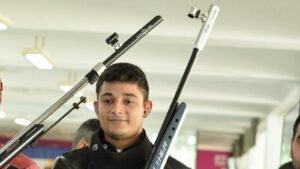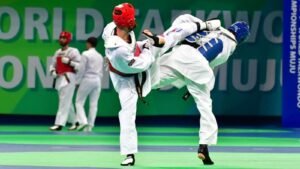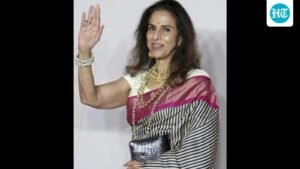
Canberra: It’s always in the details. The temperature in Canberra was a lovely 22 degrees Celsius. But as soon as we entered the aquatic center of the Australian Institute of Sport (AIS), we started to sweat. It had nothing to do with the heat of the competition and everything to do with science.

The regulations of Olympic swimming pools ensure consistency and fairness with temperatures ranging between 25-28 degrees Celsius. This range promotes efficient heat dissipation, muscle function, and general comfort during training and competition.
So at the AIS, Australia’s premier training institution, the temperature of the pool is maintained at 27 degrees Celsius. To ensure that swimmers do not have to cope with a dip in temperature upon leaving the pool, the air conditioner is set at 27 too. You sweat not by default but by design.
Australia finished fourth in the Paris Olympics with 18 gold, 19 silver and 16 bronze medals but seven of those gold, and 18 medals, came from swimming. It was the country’s best-ever Olympic Games in terms of gold medals won. That’s what it takes. It’s always in the details.
Cameras cover every part of the pool so that swimmers and coaches can study every stroke — from not just above the water but also in it. There are underwater cameras too and one wall of the pool is a one-way mirror which allows the coach to walk alongside the swimmer and perhaps see stuff that only an experienced eye might spot.
When done with the sessions, the swimmers can head over the ‘Rest Hub’. This center is divided into two sections: a dry section which deals with massages and physiotherapy and a wet section where you can get aqua therapy, ice bath or a salt water bath which promotes regulation of sleep cycles.
This is just one sport. The eight founding sports were basketball, gymnastics, netball, swimming, tennis, track and field, football, and weightlifting. Combat sports have been added to the mix and for each sport, the attention to detail is the same. Part of it is also because Australia will host the Olympics in Brisbane 2032.
The story of the AIS, which is spread out over 66 hectares, was a result of the hurt the country experienced after the 1976 Olympics in Montreal where Australia’s contingent of 184 athletes returned without a gold medal. It was the first time Australia had not won a gold medal at the Games since 1936, the tally of one silver and four bronze also the lowest since then.
The AIS started off by handing out sponsorships to elite athletes, very much like India does with its TOPS (Target Olympics Podium Scheme), but that led to accusations that too much money was being spent on elite athletes and not enough on finding and supporting emerging talent.
India has a National Institute of Sports (NIS) too, in Patiala, but the difference between the two is like chalk and cheese and if the country is serious about hosting the Olympics, it needs to start investing in this kind of infrastructure right away.
Winning medals at the Olympics costs a lot of money but it has to be spent in the right way. India still lags massively behind in sports science. The hockey team got its act together on the technology front and the results have started improving and that is a cue that many sports need to borrow from.
When you have programs that look at the sport and not the athletes, the country will suffer. USA’s growth started after United States Sports Academy was set up in 1972 after a poor show at Munich. The same is true of Australia, China and any other successful sporting nation you can think of.
Many are trying to improve sports governance in India but athlete growth and scouting are two important parts of the puzzle. That and the need to have far more homegrown high-level coaches than India now has.
“We don’t lack anything at the elite level but the problem lies at the grassroots where things are not up to the mark. We need to start making a difference at the under-14 and under-16 levels where talent can be molded the right way. That’s the reason behind the success of Australians and Europeans,” PR Sreejesh, the inspirational former India hockey goalkeeper, recently told HT.
This is not an isolated comment. Pistol shooter Manu Bhaker, a double Olympic medalist in Paris, had told HT that India’s scouting mechanism can and should be improved.
And it is okay to start slow but India’s sporting revolution needs to gather pace now. For hints, it only needs to look Down Under.







